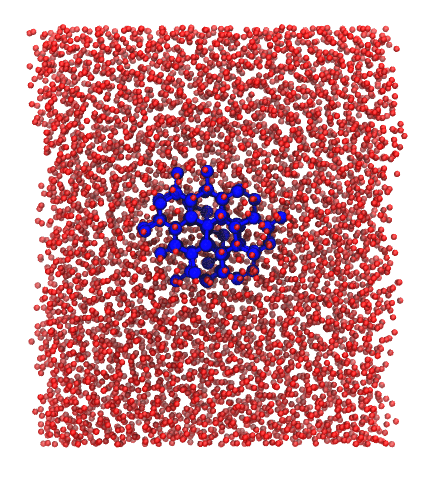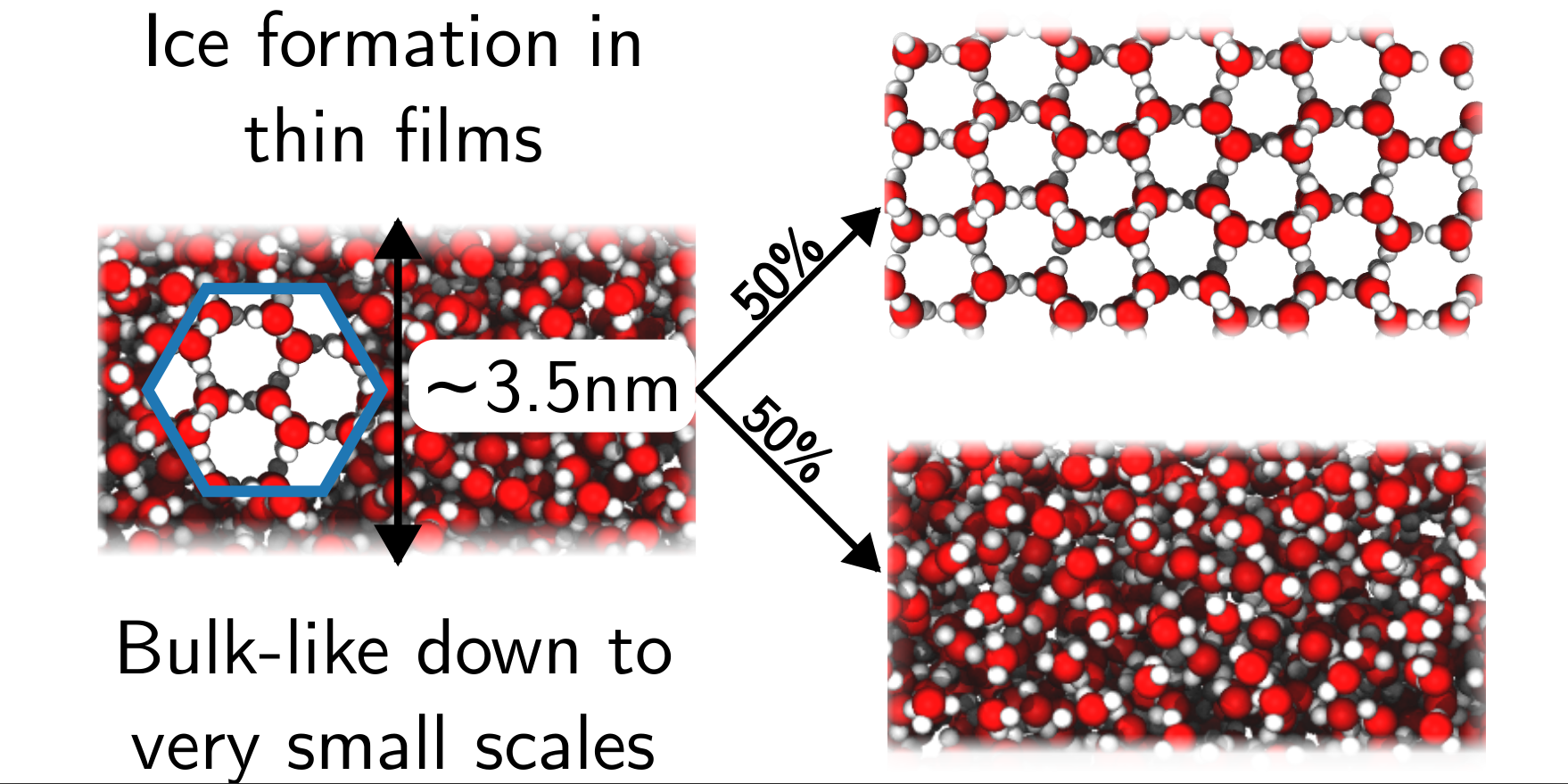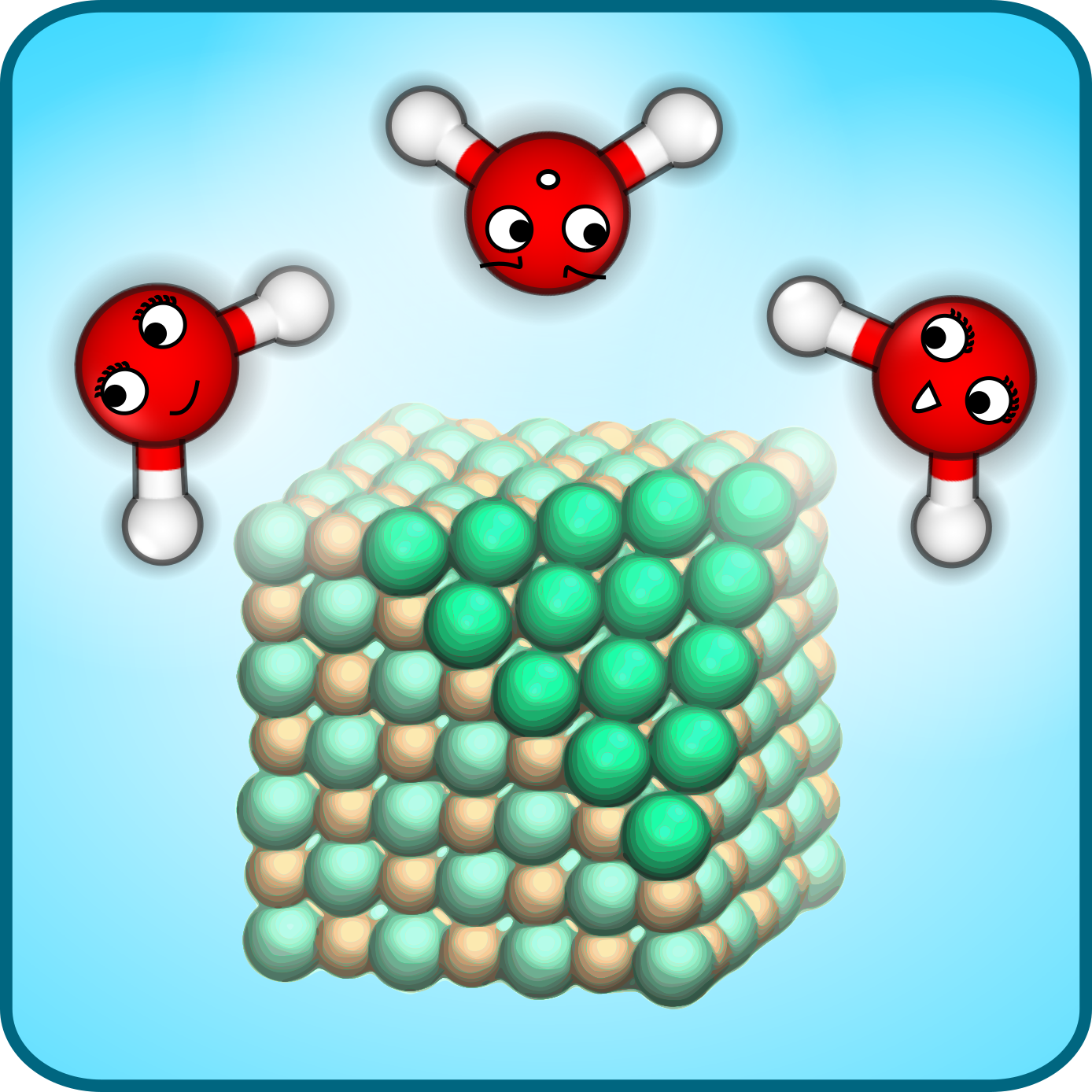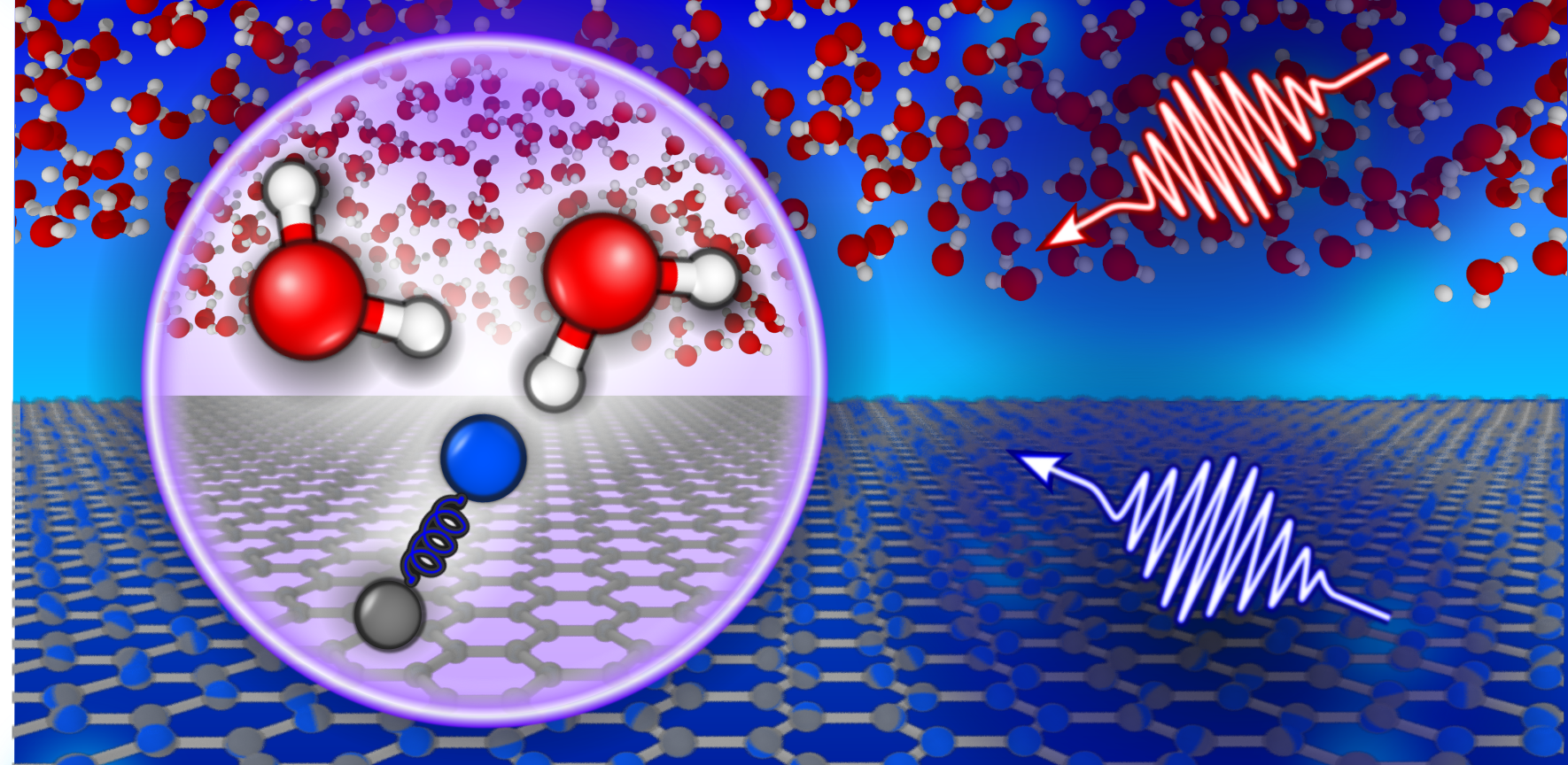As our understanding of water's phase improves, a greater amount of attention is spent on heterogeneous cases - where interfaces can play a defining role on water's behaviour. Of particular interest to us was the case of ice nucleation with a nearby interface, relevant due to increasing evidence that at low temperatures and low relative humidity - like you find in the upper troposphere - homogeneous ice nucleation occurs in water that has condense in the pores and cracks of mineral dust. Although there has been recent progress in the modelling of pore condensation and freezing, we chose to try and understand some of the more fundamental aspects of nucleation in small volumes confined by a liquid-vapour interface. Then, we briefly extend the study to demonstrate that our findings are robust to confinement by a simple Lennard Jones crystal.

Despite the several previous studies of ice nucleation the simple slab geometry we explore, it remains unclear whether the rate increases or decreases in this system. We apply seeding, where we insert a pre-formed ice nucleus and watch to see whether the crystal grows to encompass the system, or dissolves away. By identifying the crystals for which there was an even chance of growing or shrinking, we can identify the critical nucleus. We demonstrate that critical nucleus remains constant until we reach films widths of just 3.5 nm, below which we begin to see rapid increases in the nucleus size. With the other parameters for predicting rate showing no significant change as film width decreases, this acts as evidence that nucleation rate is overall indifferent to the size of the film until it reaches widths of about 1 nm thicker than the critical nucleus after which it increases. In this study, we use the coarse-grained mW model, and we demonstrate in the paper that it captures the essential physics to tackle this problem. From the validation part of this study, we conclude the the rate is unlikely to increase when using the more complex TIP4P/ice model.
So what does this say about the freezing rate of thin films? We argue that nucleation rates are indifferent to film width, while previous studies argue that it is significantly lower. Overall, we conclude that this discrepancy is largely superficial, and depends on how you account for the volume of the slab. To try to gauge whether there is any difference we should care about, we looked at the system in a similar manner to that of an experimental study. In rapidly cooling a bulk sample, a 6 nm film and a 3.5 nm films, we showed that freezing rates were marginally higher in the bulk, but this level of precision was only possible due to the artificially high control on the number of molecules in each system. For any practical purpose, these differences in rate are largely inconsequential.



